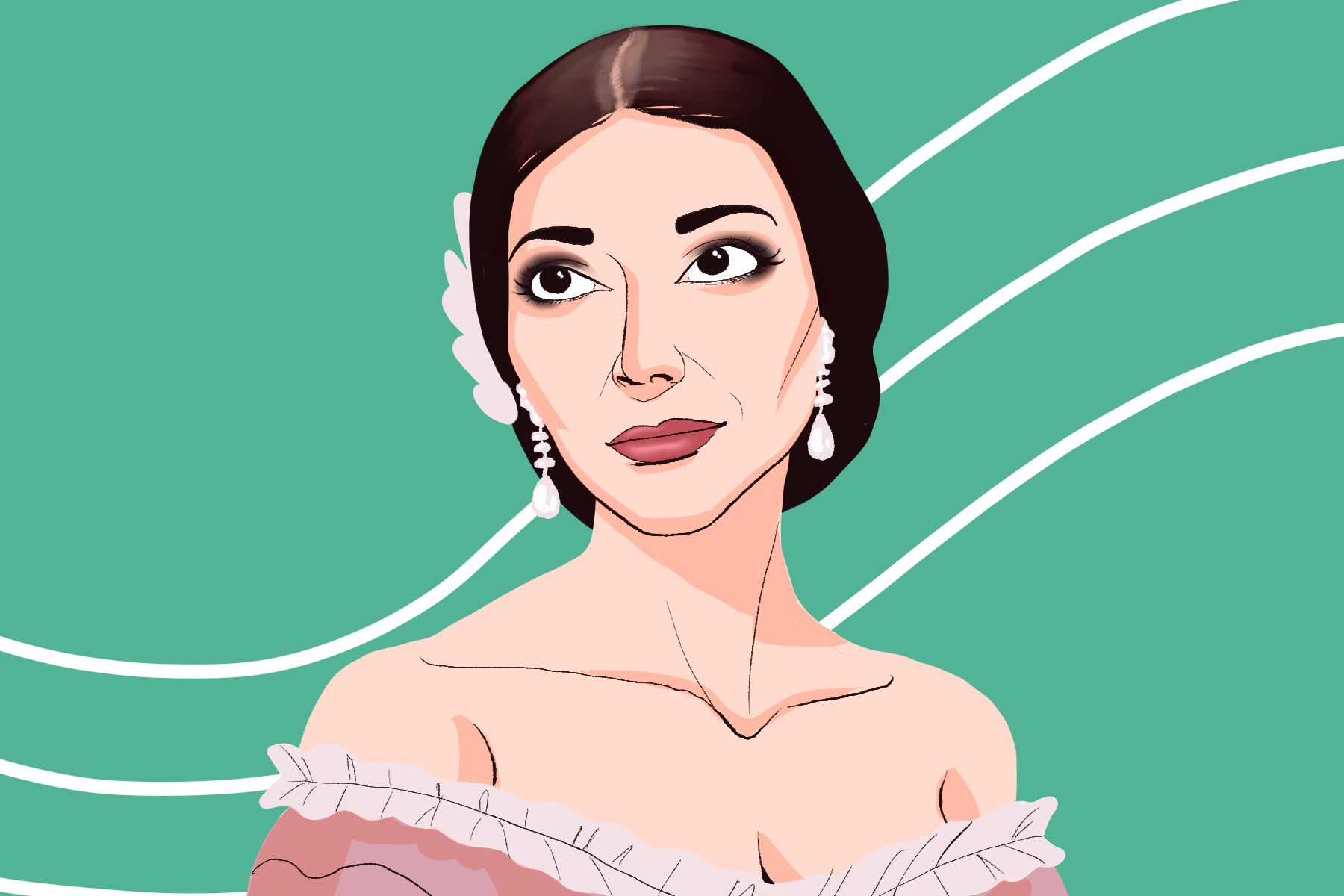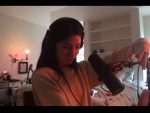Maria Callas was one of the greatest, most famous and controversial operatic sopranos of all time. Dominating the scene in the second half of the 20th century, her legend is referenced and often held up as a comparison for contemporary singers. Given the nickname “La Divina,” her vocal resilience and musical knowledge put her a step above many other singers of her time. Despite its short-lived glory, her voice has managed to echo through the decades to the 21st century.
At age 13, Callas tricked instructors at the Athens Conservatoire into thinking she was 17, the age required for enrollment. Studying with Elvira de Hidalgo, a talented soprano in her own right, Callas underwent intensive bel canto training that upheld throughout her career. After her 1941 professional debut with the Royal Opera of Athens, she took on her first major role in Puccini’s “Tosca.” In the decade that followed, she met and married her husband, Giovanni Battista Meneghini, built up her singing career, and held her Italian opera debut at the Verona Arena and her debut at La Scala in 1947 and 1950, respectively.
By the early ‘50s, she was a global phenomenon, in part because of her stage presence, dramatic interpretations and her dedication to musical perfection. Her international career ran from 1947 to 1965, relatively short-lived by operatic standards, and was truncated in part due to vocal decline, sporadic appearances and a troubled personal life. But while she experienced many setbacks, she remains one of the most recognizable voices of opera, with newly remastered recordings put out every year.
Opera’s Bel Canto
Typically associated with the triumvirate of composers from the early 19th century — Gioachino Rossini, Gaetano Donizetti and Vincenzo Bellini — bel canto originated in Italy during the late 1500s and developed over the next three centuries. It is based on “exact control of the intensity of vocal tone,” a distinction between lower and higher tones, and “a demand for vocal agility and clear articulation of notes and enunciation of words.” Defined by The New York Times as referring “to the early decades of 19th-century Italian opera,” the style is associated with “beautiful melodies, silvery voices and floods of rapid notes … sometimes only loosely around the framework of what the composer actually wrote.” Embellishments, rapid trills and octave runs characterize the bel canto style, even as the melody takes center stage.
Coloratura sopranos specialize in such runs, leaps and lightness of voice, and Callas specialized in all of these elements. Often her portamento (changing between pitches) and phrasings would add a theatric feel to arias, making each performance unique and unforgettable. Ultimately, bel canto has to do with long, elaborately ornamented phrasings that flutter from note to note, elegant like Norma’s “Casta diva” aria by Bellini, melodic like Verdi’s “La Traviata” and full of trills like Rosina’s “Una voce poco fa” aria by Rossini, all of which Callas performed during her career. She was praised for her technique and vocal ability above all else, though she was “always insistent that opera [was] drama” and had no time for it as a vocal or technical exhibition.
With her expressive voice and undeniable talent, Callas reinvigorated operas that hadn’t seen the limelight for ages. Her performance of Luigi Cherubini’s “Medea” in 1953 (which she learned in a week) was the first time the opera had been performed in Italy in 45 years, and she executed numerous iterations of the role before her death. She brought new consideration and stage time to Bellini’s neglected “La Sonnambula,” notably in the 1955 Milan performance conducted by a young Leonard Bernstein that saw Callas take high octave trills at a frightening pace and with startling accuracy.
Callas also rescued Bellini’s “I Puritani” from obscurity; as the turning point in her career, she stood in for Margherita Carosio, who had fallen ill, and she proved her range by performing Richard Wagner’s “Brünnhilde” and the “I Puritani” in the same season. After her “I Puritani,” critics wrote that “Even the most skeptical had to acknowledge the miracle that Maria Callas accomplished,” citing her “limpid, beautifully poised voice, and her splendid high notes,” as well as the “humanity, warmth and expressiveness” of her interpretation that previous singers lacked. Her ability to sing such a wide range propelled her to the international stage, where she found adoring masses for the duration of her singing career.
From Singer to Actress
Different from other sopranos of her time, Callas was more a dramatic actor than a pure singer. While many tended to stand stiffly on stage with minimal movement, Callas poured her soul into each performance, transforming into a conflicted priestess, a mad bride-to-be or a noblewoman with just a wave of her hand and a subtle expression. Not only did she understand the characters she played inside and out, but she also studied the composers and their music to better perform what they had in mind at the time of composition to elevate her above the average performer. “A real sense of harrowing intensity” always accompanied her singing, even past her prime, because of the “sense of daring” she brought back to opera in challenging her audience.
Though she was idolized by the public, many critics took offense to the imperfections of her voice. At times she could sound “strident, dangerously out of control, even ugly,” with excessive vibrato and a tendency to sing sharp near the highest end of her register. Still, critics couldn’t deny the ferocity and intensity that she brought to many roles, and her ability to find the emotional meaning in a role outshined all her contemporaries. “Her talent for bringing the music to life” more than made up for any vocal flaws and set her apart from other performers, and some of her high notes from her prime vocal years (most of her best recordings are from the late 1940s to early ‘50s) still remain unrivaled.
Putting aside the fervor and controversy surrounding her legacy and performances, Maria Callas remains a staple in any opera enthusiast’s catalog. She is still considered one of the best coloratura sopranos of the 20th century and arguably, of all time (a 2006 poll of opera critics, published in Gramophone magazine, voted her the most influential soprano of the recording era). Her revitalization and emotional interpretations of forgotten bel canto operas, along with her international reputation, catapulted opera back into the newspaper headlines and had people queuing up for several days and nights in hopes of hearing her sing.
Callas had a voice with a unique sound that was “instantly recognizable but difficult to be classified as either dramatic soprano or coloratura soprano” because she could sing both parts effortlessly. Her dedication to opera’s musicality and ability to bring the audience along for the emotional ride influenced future generations of opera singers to follow in her footsteps by performing instead of simply singing.

















